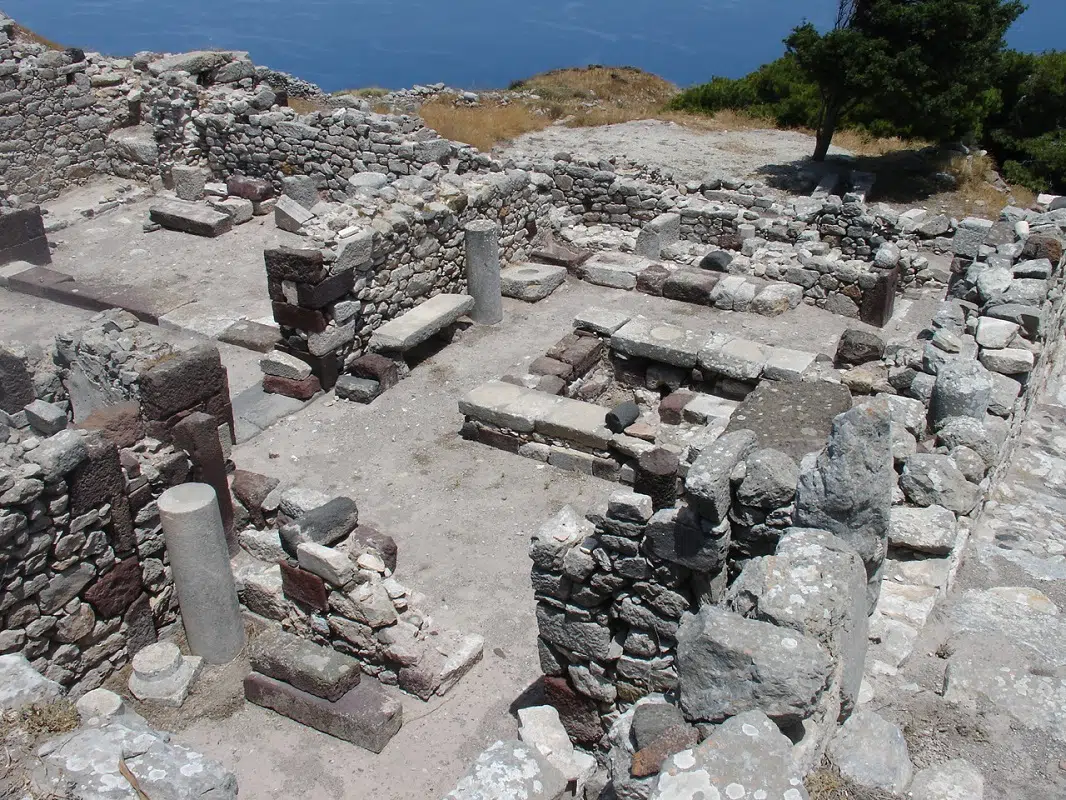
The island of Santorini, also known as Thera, is famous for being inhabited by the Minoans in the Bronze Age. It then erupted in a catastrophic volcanic event which completely wiped out the civilisation there. Yet, today, there are thousands of people living on the island. How did this happen? This article will examine how Santorini was resettled after the Minoan eruption.
How Santorini was depopulated
Santorini is a fascinating island in the Aegean Sea north of Crete. Throughout the Middle Bronze Age, Santorini was a thriving center of trade. It had several Minoan settlements on it, including the major city of Akrotiri, comparable in size to the Minoan cities on Crete.
The Minoans were the most prominent naval civilization of that era, so Santorini was evidently one of the most important islands of its day. Many scholars believe it was the origin of the legend of Atlantis.
However, this glorious existence came to a complete end in the sixteenth century BC. Some time towards the end of that century, during the reign of Ahmose I of Egypt, the island erupted. Santorini is a volcanic island, and the eruption that occurred in that century was one of the most catastrophic events in human history.
This completely destroyed the settlements on the island, blasting them into the sea or covering them with dozens of meters of ash.
How Santorini was resettled by Cadmus
After its population was completely wiped out, how did Santorini come to be inhabited once more? We can work out the answer by comparing the information provided by Herodotus with the information gleaned from archaeology.
Herodotus does not explicitly describe Santorini as being resettled. However, this is only because he displays no knowledge of the former Minoan dominance of the island. Nonetheless, he describes something related to Santorini in the context of Cadmus.
Cadmus was a Phoenician prince who traveled to Greece and introduced the alphabet to that land. The fact that the Greek alphabet ultimately derives from the Phoenician alphabet is confirmed by archaeology and scholarship. This occurred at some point in the ninth century BCE, meaning this must be when Cadmus lived.
Archaeological evidence
According to Herodotus, Cadmus and his men stopped off at Santorini on their way from Phoenicia to Greece. Some of his men decided to stay on the island instead of continuing on the journey. Thus, the Phoenicians were the ones who initially resettled the island following the Minoan eruption.
At least, this is what Herodotus tells us. Does the archaeology support this idea? As it happens, the very earliest traces of the Greek script are found on Santorini. These inscriptions are dated to the ninth century BC and are written in what is essentially pure Phoenician characters, although the words are Greek.
Most likely, these were written by Greeks who were traveling with Cadmus. Cadmus, already having Greek associates, would explain why he traveled to Greece in the first place.
Supporting this date for when Santorini was resettled is the fact that this is also the date of the earliest archaeological remains from after the Minoan eruption. In particular, the archaeological site called Ancient Thera is the earliest post-Minoan settlement that has so far been found. It dates to the ninth century BCE.
How Santorini was resettled by the Spartans
As we have seen, it appears that associates of Phoenician Prince Cadmus resettled Santorini in the ninth century BCE. However, Herodotus tells us something even more significant happened eight generations after those inhabitants had arrived.
Counting eight generations would bring us forward by about two centuries, assuming a reasonable average of twenty-five years per generation. This would therefore bring us to the seventh century BCE.
According to Herodotus, it was at this time that the Spartans arrived on the island. They were led by Theras, from whom Santorini got its name, “Thera.” Theras was a Spartan prince, whose grandfather Tisamenus was a child at the time of the Trojan War. Thus, although there were already some inhabitants on the island, Santorini was mainly resettled by the Spartans and became a bona fide Spartan colony.
Interestingly, archaeology has shown that the earliest evidence of Spartan presence on the island dates to the seventh century BC. This is exactly when we would expect to see it based on Herodotus’ information on how many generations Theras came after the time of Cadmus.
See all the latest news from Greece and the world at Greekreporter.com. Contact our newsroom to report an update or send your story, photos and videos. Follow GR on Google News and subscribe here to our daily email!



